Beijing's major infrastructure development plan during the 14th Five-Year Plan period
Planning background
1. Foundation for development
The 13th Five-Year Plan period is an important milestone in the history of Beijing. China has made every effort to promote capital development, downsized development, innovative development, green development and people-centered development. The city's development is undergoing a profound transformation, and its infrastructure development has opened a new stage of high-quality development. In the past five years, the city's infrastructure investment has totaled 1,256.85 billion yuan, 1.4 times that of the "Twelfth Five-Year Plan" period, a number of major infrastructure projects have been completed and put into operation, and the comprehensive carrying capacity of the city's infrastructure has been continuously improved.
1. Breakthroughs were made in key areas of coordinated development of the Beijing-Tianjin-Hebei region
New progress was made in the transport sector. Regional transport integration has been further promoted, and Beijing Daxing International Airport has been successfully completed and put into operation, ushering Beijing into an era of "dual aviation hubs". Beijing Daxing International Airport Expressway, rail transit Daxing Airport Line and other supporting key transportation projects have been put into operation simultaneously, and the comprehensive transportation system outside the airport has basically taken shape. The construction of the "Beijing-Tianjin-Hebei Region on Track" was accelerated, the layout of railway passenger hubs was gradually improved, and the Beijing-Shenyang high-speed railway, Beijing-Zhangjia-high-speed railway, and Beijing-Xiong intercity railway lines were put into operation. The total mileage of railways in operation within the city reached 1,351 kilometers, and the rapid rail links between the Beijing-Tianjin-Hebei city cluster were further strengthened. The "one-hour traffic circle" around the capital has gradually expanded, and the Beijing-Taiwan Expressway, Beijing-Qin Expressway, and the Capital Region Ring Expressway (Tongzhou-Daxing section) have been opened to traffic. The total mileage of expressways opened to traffic has reached 1,173 kilometers, and the national expressway network in the city has been cleared.

Breakthroughs were made in the ecological field. We accelerated key ecological projects and afforestation on the plain, completed afforestation of 1 million mu of land, developed 400,000 mu of ecological water source forest in the Beijing-Hebei region, upgraded 1.22 million mu of degraded forest in the Basang region, supported ecological development in the Xiongan New Area, and afforested 40,000 mu of land in Langfang and Baoding. We made solid efforts to promote coordinated water control in all areas, officially opened a channel to divert water from the Yellow River to the west, achieved historic connectivity between the Mother River of the motherland and the Mother River of Beijing, Yongding River, and connected the waterways of the Beijing-Tianjin-Hebei region, accelerating the formation of a pattern of multi-source water security for the capital. We have actively promoted the improvement of trans-boundary rivers, completed the improvement of the plain section of the Juma River in Beijing, launched the comprehensive improvement and ecological restoration project of the Yongding River, started construction of the comprehensive improvement project of the North Canal (Tongzhou section), continued to improve the ecological environment of the boundary river section, and eliminated all bad Class V water bodies on the exit section. To carry out innovative cooperation with water ecological protection in Zhangcheng area, support the construction of 600 square kilometers of ecological clean small watershed in two cities and five counties upstream of Miyun Reservoir in Hebei Province, improve the ecological environment in Zhangcheng area, protect drinking water sources, and jointly promote the water quality of Miyun Reservoir to meet the requirements of drinking water sources.
2. The carrying capacity of infrastructure has been significantly improved
The comprehensive transportation system has been further improved. The development of rail transit was carried out in an orderly manner. Four suburban railway lines (including Xiyan), Huaimi Line and Tongmi Line were put into operation. The total mileage of suburban railways in operation reached 365 kilometers, and the travel speed of rail transit was further improved and the service scope further expanded. The western extension of Metro Line 6 and Yanfang Line were completed and opened to traffic, and the total mileage of urban rail transit has reached 727 kilometers, and the line network has been continuously encrypted and improved. The overall Plan of Beijing's Surface Public Transit Network was released and implemented. The construction of Guangqu Road Rapid Transit system was accelerated, and the mileage of bus lanes exceeded 1,000 kilometers. The service mode is more abundant, the total number of diversified bus routes has reached 455, and the level of public transport service has continued to improve. The urban road network has been continuously improved, with the second phase of Guangqu Road, the west extension of Chang 'an Avenue, and the South Xisanqi Road being opened to traffic. The mileage of urban expressways and trunk roads has reached 1,396 kilometers, and the west section of Fengsheng Hutong, Weiyang Hutong, Huayuan Street and other sub-branches being opened to traffic. A total of 136 sub-branches have been built to further smooth road microcirculation. Improve the slow travel environment, complete the treatment of 3200 kilometers of secondary and above roads in the central urban area, build 9 demonstration zones of the slow travel system in the northwest of the CBD and Huilongguan, carry out special management of shared bicycles, and set up 15,000 bicycle parking areas in the central urban area and the sub-center of the city, and the management is more standardized.
The ability to secure water resources has been continuously enhanced. The Tongzhou Branch line of the South-to-North Water Diversion Project was completed, and the Daxing Branch Line was completed, with a total water transfer volume of more than 6 billion cubic meters. Four water plants, including the tenth water plant and Tongzhou Water Plant, have been completed and put into operation, and about 1,300 kilometers of water supply network have been built and renovated. The city's water supply capacity has reached 9.2 million cubic meters/day, and the safety factor of urban water supply has reached 1.2 to 1.3. All 16 districts of the city have been built into water-saving zones, and the water consumption per unit of regional GDP has dropped by about 15%, and the water-saving target has been fully achieved. The protection of drinking water sources has been strengthened, and the Miyun Reservoir, Huairou Reservoir and Jingmi Aqueduct have been fully closed. The improvement of small river basins has been continuously promoted, and 401 ecological clean small river basins have been built in the city, and the construction rate of ecological clean small river basins in mountainous areas has reached 67%. New progress has been made in comprehensively improving river courses. The Yongding River and the North Canal have been comprehensively improved and ecological restoration has been carried out. The Yongding River in Beijing is now fully open to water for the first time in 25 years. Continuous monitoring and evaluation of water ecological health has been carried out, and a network of water ecological monitoring stations has been initially established in rivers, reservoirs and lakes, and the city's water ecological health has continued to improve.
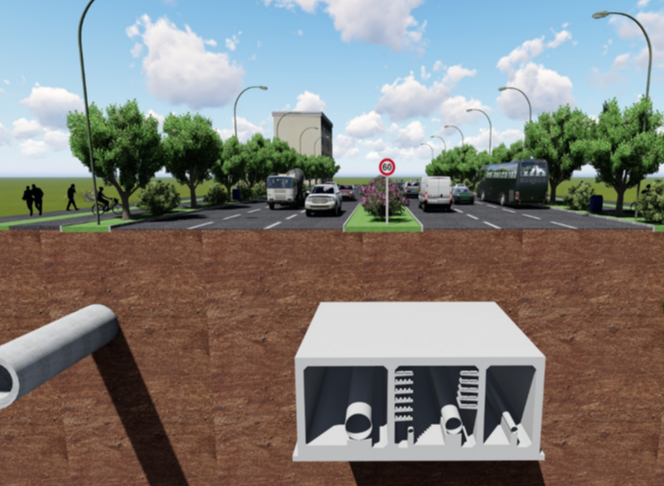
The level of landscaping continued to improve. The ecological and environmental quality of urban areas has been continuously improved, and 3,773 hectares of urban green space has been added, 190 urban leisure parks, 460 small and micro green Spaces and pocket parks have been built, 52 urban forests have been built, and 597 kilometers of healthy greenways have been built. The coverage of the 500-meter service radius of park green Spaces has reached 86.8%. The ecological capacity of the plain area has been further expanded, and a new round of afforestation and afforestation project of one million mu has been launched. 590,000 mu of large-scale forest has been added, and the forest area of the plain area has reached 2.45 million mu, and the forest coverage rate of the city has reached 44.4%. Two "green necklaces" have basically been formed in the Green Zone, with 102 parks of various types in the first Green zone and 40 country parks in the second Green zone. Green barriers in mountainous areas have been strengthened, key national projects such as the control of sandstorms between Beijing and Tianjin have been continued, and 219,000 mu of planted forest has been completed and 325,000 mu of low-efficiency forest has been transformed, with a forest coverage rate of 60 percent in mountainous areas. 24,200 mu of rural landscaping has been completed, and 30 forest towns and 250 green villages in the capital have been created. Steady progress has been made in the protection, restoration and development of wetlands. 11,000 hectares of wetlands have been restored, and six wetland nature reserves, 12 wetland parks and 10 wetland nature protection communities have been established, significantly increasing biodiversity.
The energy security system has been improved. We continued to adjust and improve the energy mix, increasing the proportion of high-quality energy to 98.6 percent, and reducing energy consumption per unit of GDP by about 24 percent over 2015. The power supply capacity of urban and rural areas has continued to improve, and four gas thermal power centers have been built and put into operation, achieving clean local power production, and the city's power supply reliability rate has reached 99.995%. The gas supply guarantee capacity has been continuously enhanced, and the Beijing section of the "one trunk and three branches" project of the Shan-Beijing fourth Line has been completed, and 2 gas gate stations, 4 high pressure A regulator stations and 12 high pressure B regulator stations have been built. All 16 districts are connected to piped natural gas, and the gas pipeline network in Pingyuan has been "connected to towns". The scale of clean heating continues to expand, complete the renovation of clean energy such as Beichen heating plant and Baoneng heating plant and the transformation of emergency heat sources such as Guohua Power Plant, fully implement the replacement of municipal coal-fired boilers and rural loose coal clean energy, and basically achieve clean heating in urban areas of the city.
3. The capacity of urban governance has been continuously enhanced
Comprehensive transport management was implemented in an orderly manner. Hierarchical control of 943 blocked points, to create 24 central urban congestion demonstration areas, the full implementation of road parking reform, the city above the branch road roadside parking all realize electronic charging, "parking, parking fees, parking penalties" concept deeply rooted in the people, traffic congestion has been alleviated to a certain extent.
Remarkable progress has been made in water pollution control. Completed the second three-year action plan for sewage treatment, and launched the implementation of the third three-year action plan for sewage treatment. The construction of sewage collection and treatment facilities was accelerated, 26 new reclaimed water plants were built in the city, and eight sewage treatment plants were upgraded and renovated. In urban areas, sewage collection and treatment were basically realized, and pollution control in rural areas was carried out in an orderly manner. The sludge has basically achieved harmless treatment; We will accelerate efforts to improve the water environment, make the utilization of recycled water an advanced level in the country, eliminate all inferior V water bodies on national examination sections, and carry out comprehensive treatment and landscape enhancement projects for key rivers such as the Qinghe, Bahe, and Tonghui rivers, so as to improve the water environment of river channels and achieve initial recovery of river channels.
The means of smart governance have been upgraded. China's first transportation and green travel integrated service platform (MaaS) was put into operation, the construction of information management platforms for urban environment construction, underground pipelines, and environmental health was completed, and government services realized online "one-network", and intelligent management began to show results.
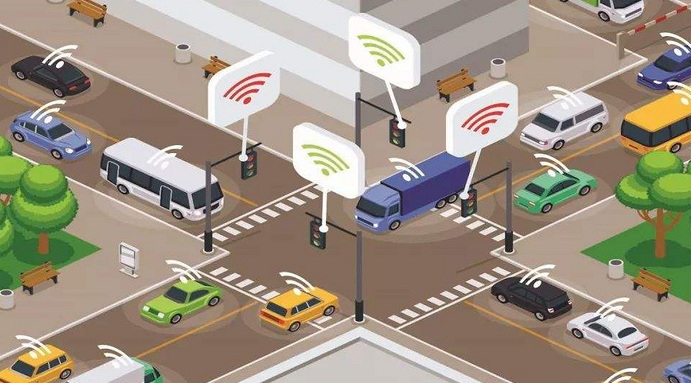
We carried out intensive and refined governance. The garbage management system has been further improved, and the newly revised Regulations on the Management of domestic waste in Beijing have been promulgated and implemented, the construction coverage rate of garbage classification demonstration areas has reached 99%, the recycling rate of domestic garbage has reached 35%, a total of 1,500 garbage classification demonstration villages have been created, and the domestic garbage of 99% of the administrative villages in the city has been effectively treated, and a new situation of garbage classification has basically formed. The environmental improvement of backstreets and alleys has achieved remarkable results, and the three-year action to improve the environmental improvement of backstreets and alleys in the core area has been successfully concluded, and 3,500 backstreets and alleys have been completed, and the urban appearance has been improved from the details. The renovation of overhead lines into the ground has continued, and more than 1,400 kilometers of overhead lines and nearly 31,000 poles of various types have been renovated, making urban public Spaces cleaner and more orderly. Major progress was made in building beautiful rural areas, and 3,254 villages were completed to improve the living environment, and the living environment in rural areas continued to improve.
4. More solid security in key areas
The infrastructure in the core area has been continuously upgraded. The second phase of Metro Line 8 was put into operation, and existing stations such as Xuanwumen Station and Andingmen Station completed capacity expansion and renovation. Speed up the construction of microcirculation roads, increase financial support, simplify approval procedures, build the south section of Beixinhua Street, Dixingju Road, Xixinglong Street and other roads, and ease traffic congestion in Qianmen, Tiantan and other areas. We will take a number of measures at the same time to increase urban greenery, promote the construction of tree-lined streets, and complete the renovation and upgrading of Ping An Avenue and other streets. Make full use of the dredding space to build small and micro green Spaces, complete the construction of Jiaowei Hutong, Dongfu Shouli, Jingyun Garden and other pocket parks and small and micro green Spaces, continue to promote green around the people, and meet the needs of citizens for green ecological space.
The main framework of urban sub-central infrastructure has basically taken shape. The east extension of Metro Line 7 and the south extension of Batong Line were opened to traffic; the urban sub-center Line of suburban railway was officially opened to traffic; and the second phase of Guangqu Road and the Binfu Road were opened to traffic, making internal and external transportation more convenient. Thirteen substations have been built, and the power supply capacity has increased by more than 30 percent. The Tongzhou Water Plant under the South-to-North Water Diversion Project has been put into operation. The urban sewage treatment rate has reached 99 percent, the use of high-quality energy has reached 100 percent, and the harmless treatment rate of household waste has reached 100 percent. The ecological quality has been greatly improved, all 53 sections of black and odorous water bodies have been treated, and the water quality of all national examination sections has reached the standard. A total of 251,000 mu of green construction has been implemented, and the coverage rate of the 500-meter service radius of the park green space has reached 91.2%.
Infrastructure development in the southern region has accelerated. The comprehensive transportation system continued to improve. The fourth phase of Metro Line 8 and the northern extension of the Fangshan Line were opened to traffic; the construction of the southern section of Liucun Road and the first and second phases of Tongjiu Road was accelerated; and a number of multi-level bus stations such as Guogongzhuang and Ertong Factory were completed. Strengthen the supply of resources and energy, realize the Fengtai Station, Liangxiang University Town and other 220 kV power transmission and transformation projects put into operation, complete the construction of water supply facilities such as Huangcun Water plant and Liangxiang Water plant, and complete the Beijing Gas Tianjin Nangang LNG emergency reserve project (Chengnan Terminal Station). Green and ecological space continued to expand, Qinglonghu Forest Park (Phase II) and Nanhaizi Park (Phase II) were completed and opened, construction of Nanyuan Forest Wetland Park was accelerated, and comprehensive improvement and ecological restoration projects for Yongding River and Machao River were carried out in an orderly manner.
Positive results have been achieved in ensuring infrastructure in the Hutien area. A backbone road network with "one vertical, one horizontal, and five smooth connections" has been initially established. The break point of Lincui Road has been opened, and important blockages such as Chenjiaying East Bridge and Northern Suburb Farm Bridge have been effectively removed. China's first dedicated commuter bicycle road has been opened, with a traffic volume of more than 2.7 million vehicle times. The carrying capacity of municipal infrastructure has been gradually improved, the first phase of the renovation of the rain and pollution combined pipe network in Tiantongyuan area has been implemented, rain and pollution diversion has been gradually realized, 64 self-provided Wells have been rebuilt, 120,000 residents have been drinking safe municipal water, TBD reclaimed water plant has been built, the processing capacity of 100,000 cubic meters per day has been increased, distribution network facilities have been built, and the power grid access load capacity has been increased by 25%; The appearance of the community has been significantly improved, and DongXiaokou City Leisure Park, TBD City Leisure Park and Hexin Park have been completed and opened, increasing natural oxygen bars for surrounding residents, and mending 14 pocket parks to achieve "green at the window and green at the corner".
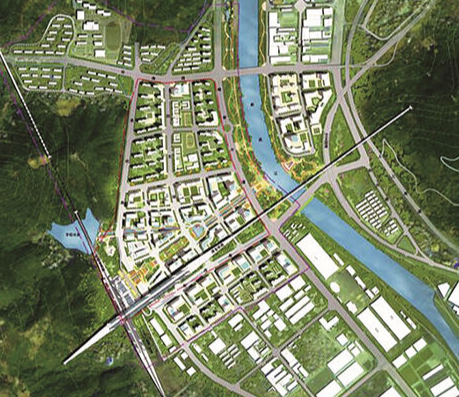
5. New breakthroughs were made in reform and innovation
We will strengthen top-level design for urban planning, construction and management. Implement the spirit of the Central Urbanization Work Conference and the Central City Work Conference, formulate and issue the Opinions on Comprehensively Deepening Reform and Improving the Level of Urban Planning and Construction Management, and make overall guidance for further doing the city's urban work in the new era.
We will deepen supply-side structural reform. Set up Yongding River Basin Investment Company, adopt the model of integration of investment subjects to drive the integration of basin governance, form a positive interaction between "river chief" and "river workers", and promote the government and the market to work together. The Beijing-Tianjin-Hebei Intercity Railway Investment Company was established, actively integrated into the overall reform of the national railway investment system, coordinated the investment, financing, construction, operation, and management of the Beijing-Tianjin-Hebei intercity railway, and achieved new results in cross-provincial cooperation.
Establish a suburban railway coordination mechanism. Set up a special class of suburban railway work, build a multi-level coordination mechanism and a regular work scheduling mechanism, and achieve high-level coordination of road and city leaders, coordination of special classes, and coordination of departments, so as to provide a guarantee for the overall promotion of the development of suburban railway. The Guiding Opinions on Promoting the Development of Urban (Suburban) Railways (Trial) were issued to strengthen planning and overall planning, innovate construction and operation models, and promote the reform of the investment and financing mechanism of suburban railways. We will formulate key work plans every year, constantly promote the construction of key projects, establish operational standards and norms, strengthen publicity and cultivation of passenger flow, and improve transportation facilities.
We will accelerate investment and financing reform. We have improved investment guidance policies, issued documents such as Several Measures to Support the Development of Beijing's Infrastructure Real Estate Investment Trust (REITs) Industry, and encouraged private capital to participate in infrastructure construction and operation. The ABO model is adopted in the field of rail transit innovation, the responsibilities of government and enterprises are clarified, and the role of market entities is fully brought into play. The PPP model has been implemented in an orderly manner, with highways attracting 47 billion yuan of social capital, rail transit attracting 30 billion yuan of social capital, and sewage treatment franchising promoted in accordance with the "separation of plants and networks" model. We will complete the reform of state-owned forest farms, further deepen the reform of the collective forest rights system, and start pilot projects to build 42 new type of collective forest farms.
In general, during the "13th Five-Year Plan" period, the development of the capital city has entered a new stage of incremental construction and inventory improvement, with the results of infrastructure construction in line with expectations, the development foundation is more solid, the overall planning in various fields is more powerful, and the advantages of the mechanism and system are more evident, providing solid support for the upgrading of the function of the capital city and the urban development of Beijing. At the same time, difficulties in development still exist, the problem of unbalanced and inadequate infrastructure development still exists, the supply guarantee capacity and operational efficiency need to be further improved, the level of fine management still has a large room for improvement, service quality and the people's growing needs for a better life, there is a certain gap between the need to strengthen reform and innovation in the "14th Five-Year Plan" period, strengthen the supply guarantee. We will further promote high-quality infrastructure development.
2. Development situation
The 14th Five-Year Plan period is the first five years after China completed the building of a moderately prosperous society in all respects and achieved the first centenary goal. It is also the first five years in which China embarked on a new journey to fully build a modern socialist country and march toward the second centenary goal. It is also a crucial period for Beijing to fulfill its strategic positioning as a capital city and build itself into a world-class harmonious and livable city. The new situation and new mission put forward higher requirements for infrastructure development.
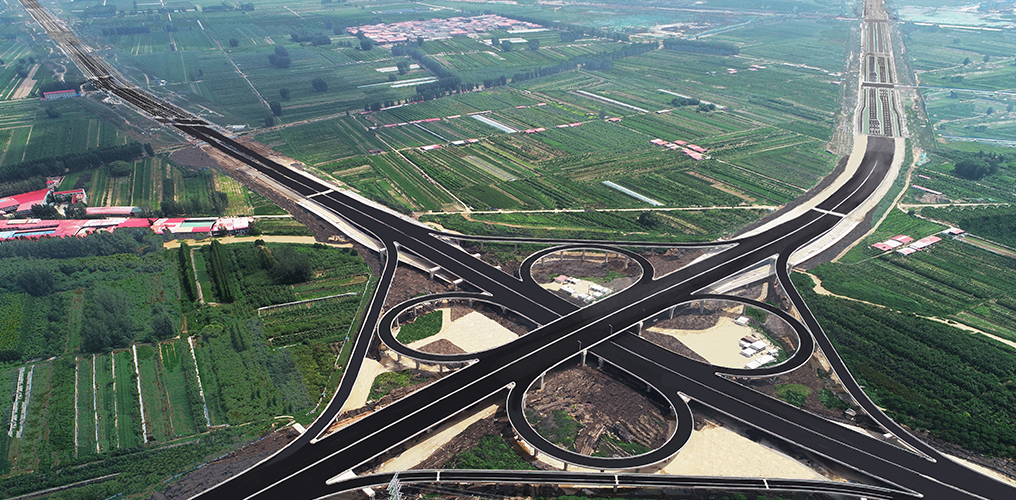
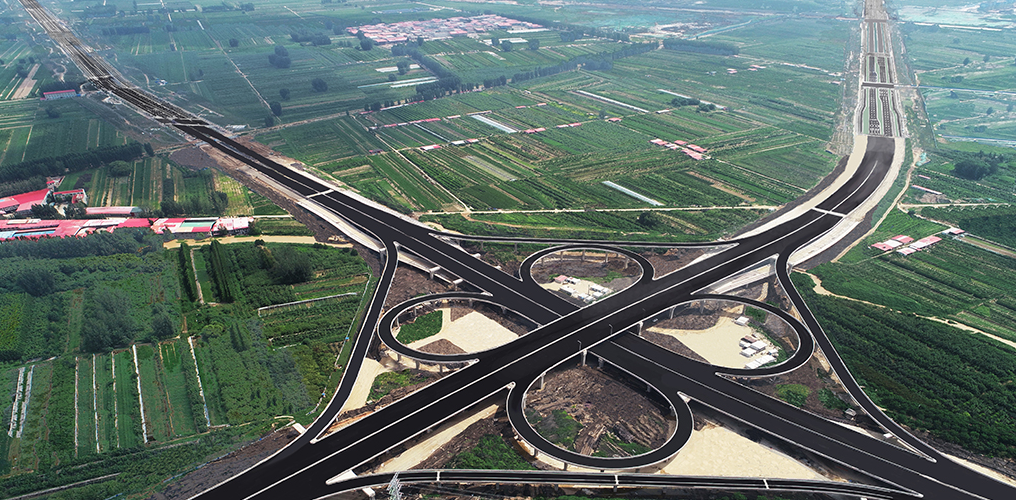
Building a new pattern of development requires infrastructure to provide a more solid guarantee. The world today is undergoing profound changes unseen in a century. China's development environment is becoming increasingly complex, instability and uncertainty are on the rise, and the capital is more closely linked to the destiny of the country. In building a new development pattern with the domestic cycle as the main body and the international and domestic cycles reinforcing each other, the state has entrusted Beijing with greater responsibilities and put forward higher requirements for cultivating the city's competitive advantages and enhancing the city's attractiveness. Infrastructure development should actively serve and integrate into the new development pattern, enhance the awareness of risks and opportunities, strengthen overall planning and strategic deployment, and support and guarantee the high-quality economic and social development of the capital.
The implementation of the strategic positioning of the capital requires that infrastructure play a stronger guiding and supporting role. The coordinated development of the Beijing-Tianjin-Hebei region has brought broad prospects, and the in-depth implementation of the Beijing Urban Master Plan (2016-2035) has put forward higher requirements for optimizing the functions of the capital and improving the quality of the city. At present, the problem of regional coordinated development and urban spatial imbalance is still prominent in the city. During the "14th Five-Year Plan" period, infrastructure development needs to break through administrative divisions to optimize resource allocation from a broader perspective, further implement the overall urban planning of Beijing, promote the coordinated development of Beijing-Tianjin-Hebei, construct the sub-center of Beijing City with high standards, and highlight key points while strengthening the overall guarantee. We will give full play to the guiding role of infrastructure.
People's yearning for a better life has created new demands for infrastructure. With the continuous development of the economy and society, the mode of urban development has undergone profound transformation, and the expectations of the general public for a better life have become more multi-level and diversified. The development of infrastructure in the period of the 14th Five-Year Plan should be guided by major issues that restrict the sustainable development of the capital and hot and difficult issues of public concern, ensure and improve people's livelihood in the course of development, respond to the needs of the people, closely focus on harmonious and livable conditions, increase differentiated and high-end supply, improve the quality of infrastructure, and promote all-round urban development and social progress.
The new round of scientific and technological revolution provides new driving forces for infrastructure development. During the 14th Five-Year Plan period, the application of new technologies, such as 5G and artificial intelligence, has accelerated, and a new round of scientific and technological revolution and industrial transformation has deepened. In the face of new scientific and technological development, it is necessary to speed up the construction of new infrastructure driven by technological innovation, promote the in-depth application of technologies such as the Internet, big data and artificial intelligence, and support the transformation and upgrading of traditional infrastructure. We will promote integrated development of infrastructure and make it more information-based and intelligent.
- EMERSON
- Honeywell
- CTI
- Rolls-Royce
- General Electric
- Woodward
- Yaskawa
- xYCOM
- Motorola
- Siemens
- Rockwell
- ABB
- B&R
- HIMA
- Construction site
- electricity
- Automobile market
- PLC
- DCS
- Motor drivers
- VSD
- Implications
- cement
- CO2
- CEM
- methane
- Artificial intelligence
- Titanic
- Solar energy
- Hydrogen fuel cell
- Hydrogen and fuel cells
- Hydrogen and oxygen fuel cells
- tyre
- Chemical fiber
- dynamo
- corpuscle
- Pulp and paper
- printing
- fossil
- FANUC
- Food and beverage
- Life science
- Sewage treatment
- Personal care
- electricity
- boats
- infrastructure
- Automobile industry
- metallurgy
- Nuclear power generation
- Geothermal power generation
- Water and wastewater
- Infrastructure construction
- Mine hazard
- steel
- papermaking
- Natural gas industry
- Infrastructure construction
- Power and energy
- Rubber and plastic
- Renewable energy
- pharmacy
- mining
- Plastic industry
- Schneider
- Kongsberg
- NI
- Wind energy
- International petroleum
- International new energy network
- gas
- WATLOW
- ProSoft
- SEW
- wind
- ADVANCED
- Reliance
- YOKOGAWA
- TRICONEX
- FOXBORO
- METSO
- MAN
- Advantest
- ADVANCED
- ALSTOM
- Control Wave
- AB
- AMAT
- STUDER
- KONGSBERG
- MOTOROLA
- DANAHER MOTION
- Bently
- Galil
- EATON
- MOLEX
- Triconex
- DEIF
- B&W
- ZYGO
- Aerotech
- DANFOSS
- KOLLMORGEN
- Beijer
- Endress+Hauser
- MOOG
- KB
- Moxa
- Rexroth
- YAMAHA
- Johnson
- Westinghouse
- WAGO
- TOSHIBA
- TEKTRONIX


Email:wang@kongjiangauto.com



































































































































